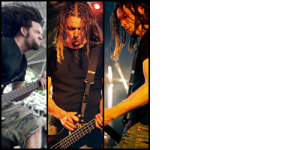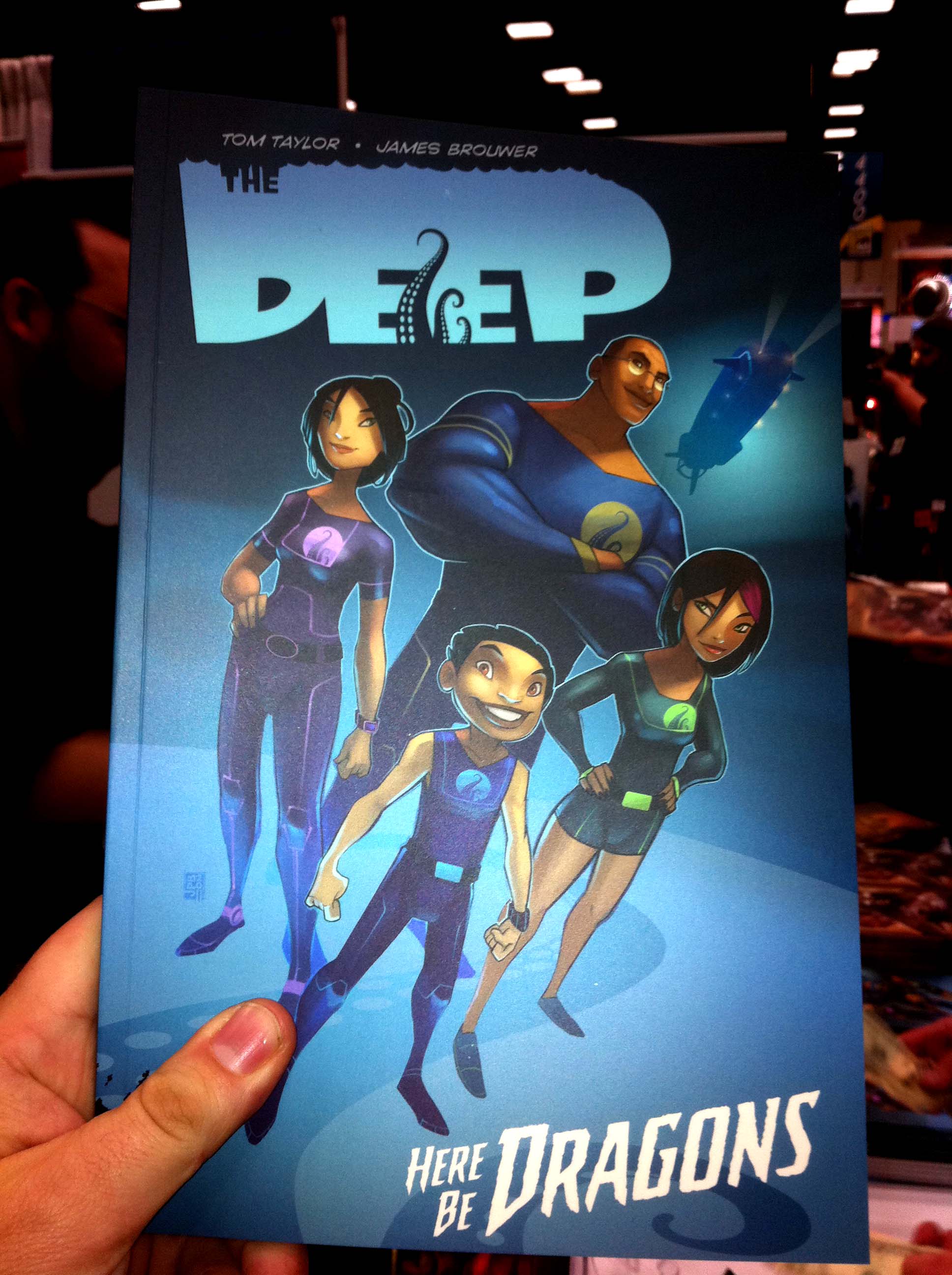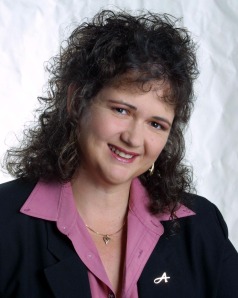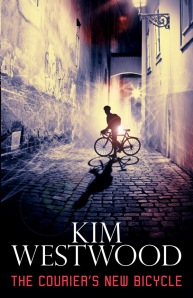I’m expanding my series featuring fantastic authors to include fantastically creative people across the different mediums, which is why I’ve invited the talented Queenie Chan to drop by.
There are links to give-aways sprinkled throughout the interview.
Q: In the Eighties I lived in Melbourne and knew a bunch of comic artists. One of the things I noticed was that they would be obsessed with art work, the look, the over-all layout of the page, but story would fall by the wayside. On your website you say: ‘After all, the essence of manga is not so much the art, but the story-telling, themes and pacing. These three are what you should concentrate on when trying to tell a story — any story, not just manga.’ Have you always been fascinated by story? Did your parents read to you? When you saw a movie, did you imagine what happened to the characters afterwards?
 Oh, that sounds real interesting! You sound like you met a lot of interesting people when you lived in Melbourne (I must say, I did too when I lived there for a year). Anyway, you’re right about the many different camps of people who read graphic novels – some are all about the art, others are all about the story, while yet more believe in a combination of both. Personally, I’ve always felt that story is more important than art – a story can’t be expressed properly if the art is inadequate, but I also have seen a lot of well-drawn manga/comics that are dull and boring despite beautiful, realistic renderings. I still feel that to work in any storytelling medium (which comics is), your first duty is to engage the reader’s attention in whatever the purpose of the medium is for, so if it’s comics, it should be story.
Oh, that sounds real interesting! You sound like you met a lot of interesting people when you lived in Melbourne (I must say, I did too when I lived there for a year). Anyway, you’re right about the many different camps of people who read graphic novels – some are all about the art, others are all about the story, while yet more believe in a combination of both. Personally, I’ve always felt that story is more important than art – a story can’t be expressed properly if the art is inadequate, but I also have seen a lot of well-drawn manga/comics that are dull and boring despite beautiful, realistic renderings. I still feel that to work in any storytelling medium (which comics is), your first duty is to engage the reader’s attention in whatever the purpose of the medium is for, so if it’s comics, it should be story.
So yes, I’ve always been more fascinated by story, and as you said, I like to imagine the continuation of stories after they’ve “officially” finished. My parents encouraged me to read as a child, but they never read to me much (neither read fiction, to be honest), and so I got my fix from a variety of different sources – books, movies, TV series, cartoons, manga and video games. Even as a child, I was always writing fan-fiction in my head based on my favourite TV shows.
Q: You say you plot the story, concentrating on the beginning and end and often let the middle take care of itself. And that: ‘In longer stories … there is time to set the characters free in the world you’ve created, and watching them interact with each other and with the environment. If your characters are well-constructed, then they would behave accordingly, and sometimes in ways completely unexpected to you.’ At this stage are you still brainstorming the story flow in a sentence or two, or do you actually start to draw and find the characters doing unexpected things?
 Since I’m a comic book writer/artist, the way I work is quite different to prose authors. I’m not saying I’m representative of comic book writers or artists in general, but most people who work in the comic medium are often constrained by the number of pages available. So in my case, the first thing I do when brainstorming is to figure out how many pages a story can be, because if a story becomes too long, it may be impossible to draw (since it will be impossible to finish).
Since I’m a comic book writer/artist, the way I work is quite different to prose authors. I’m not saying I’m representative of comic book writers or artists in general, but most people who work in the comic medium are often constrained by the number of pages available. So in my case, the first thing I do when brainstorming is to figure out how many pages a story can be, because if a story becomes too long, it may be impossible to draw (since it will be impossible to finish).
With prose, you can always add paragraphs or sentences and rewrite things if you want, but unfortunately with comics, once you’ve set something down on paper, it can be very hard to change. You can’t add an extra two panels to page 26 of your page 170 book (so far) if you want to – it will mess up the panel flows for the rest of the book. Because of this, my brainstorming usually involves writing down what happens on page 1, then what happens on page 2, and continuing by making a page-by-page summary of what happens on each page.
This part isn’t hard, but sticking to it isn’t always easy. Things always change when you go from prose to images, so you have to accommodate having to insert extra pages in when you start drawing the comic. Other times you’ll have to shorten scenes or extend them, so these days, I always make sure I have a good “feel” of the story in my head before I draw anything. As I said, the longer your story, the more freedom you have in letting your characters have their character moments. You may find a scene play out different as you draw it than you originally imagined, but the overall arc of the story shouldn’t deviate from the plan too much.
Q: You say you consider yourself: ‘… a Citizen of The World.’ You were born in Hong Kong and came to Australia when you were six. Did you live in a multicultural suburb where you mixed with people from a lot of different backgrounds or was this interest in other societies just something that you uncovered as you came across books and movies from other cultures?
 I grew up in a very multi-cultural suburb alright – I went to school with all sorts of interesting people and it was always lovely to learn about other cultures! I was always very interested in travelling, and not necessarily to other Anglophone cultures. As a child, I wanted to go to Africa, to the Middle East and to India, because I thought of these places as exotic, and with a long history.
I grew up in a very multi-cultural suburb alright – I went to school with all sorts of interesting people and it was always lovely to learn about other cultures! I was always very interested in travelling, and not necessarily to other Anglophone cultures. As a child, I wanted to go to Africa, to the Middle East and to India, because I thought of these places as exotic, and with a long history.
I think being a history buff helps a lot too. I read a fair amount about Ancient History, and it’s always been a kind of dream for me to visit those historic places that I’ve read so much about.
Q: You say: ‘The reason why I’m so interested in interlocking story threads has a lot to do with my interest in human nature, sociology and anthropology. One of the things I find infinitely fascinating about genre-based story-telling in general is the environment the story is set in, and how that influences the character’s morals, values and actions.’ This is where I come from when writing my own books. I like to put my characters in situations that make them confront what they believe. You’ve made me want to run out and buy some of your books now. Was there a particular writer/movie director/artist whose mastery of character and setting made you think, Wow, that is what I’d like to do, but in my own way?
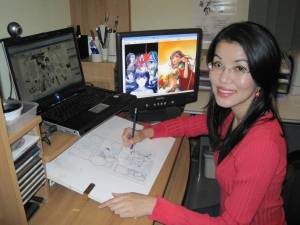 Ah, nice to know we share that point-of-view in common! I think fantasy can get a bad rep amongst some circles, because people tend to think they know what fantasy is without having read any of it (D&D, girls in metal bikinis swinging swords at orcs). The truth is, fantasy is just anything that isn’t set in this world, but set in a different world; a world which has social conventions similar to our own. What better way is there to explore human nature, without all the political, racial, cultural and historical baggage that each one of us accumulates in this world, just by virtue of living in it? As you said, putting your characters in situations that make them confront their beliefs is what people in this world do every day, just as they do in the worlds you create in your novels.
Ah, nice to know we share that point-of-view in common! I think fantasy can get a bad rep amongst some circles, because people tend to think they know what fantasy is without having read any of it (D&D, girls in metal bikinis swinging swords at orcs). The truth is, fantasy is just anything that isn’t set in this world, but set in a different world; a world which has social conventions similar to our own. What better way is there to explore human nature, without all the political, racial, cultural and historical baggage that each one of us accumulates in this world, just by virtue of living in it? As you said, putting your characters in situations that make them confront their beliefs is what people in this world do every day, just as they do in the worlds you create in your novels.
As for people who have inspired me… there’s been far too many to list. I can point out one man in particular who set me on my path – Tezuka Osamu, the creator of Astro Boy. He was a thoroughly-entertaining manga artist, but also a great humanist, and I encountered his series Black Jack at a particular time in my life (I was 15) which left a deep impression on me. Black Jack is about a rogue doctor who charges exorbitant fees for his services, but he’s also a very good doctor who understands that some people have illnesses that have nothing to do with the physical. The ethical questions that crop up in that manga is quite interesting.
Q: From reading the blurb about The Dreaming it seems to have the feel of the movie Picnic at Hanging Rock, which had a lyrical dreamlike quality about it, and to also be a modern take on the Gothic Romance Literature. Are these two sources which might have influenced you subconsciously as you were creating this story?
Picnic at Hanging Rock was definitely the biggest inspiration for The Dreaming, and you’re right about the gothic literature influences. Rebecca by Daphne DuMaurier was the other big influence, as were movies like Rosemary’s Baby. The visual aspect was quite important for me (namely the way the school looked), but I think I wanted to create a more modern, “haunted-school” take on the whole Picnic at Hanging Rock mythos, so the story ended up bearing hardly any resemblance to any of these three books/movies. Which is a good thing. Even if you can name all your influences, it’s a pleasure to know that what you created is unique in its own way.
By the way, I have the first 2 volumes (of 3) of The Dreaming online as a free webcomic.
Q: Your chapter dividers in The Dreaming remind me a little of the black & white work of Arthur Rackham and perhaps Art Nouveau (Mucha). Do you have heaps of books on art?
Actually, I don’t have many artbooks, especially compared to other comic book artists. I’m not really big on art at all. As I mentioned before, I’m more interested in story-telling than I am in art, so people are often aghast when it turns out that I haven’t heard of [insert name of famous illustrator here]. It’s assumed that all people who draw must be big fans of the art world, but unfortunately… I’m not.
I really do like Mucha’s art style, though it wasn’t something I’ve discovered until recently. And while I love what I’ve seen of Arthur Rackham’s artwork (google images, yay!), I actually think that the chapter divider art for “The Dreaming” looks more like some of Gustav Klimt’s line artwork (that I randomly saw in a book somewhere). I must say that I wasn’t influenced by any particular artist when I drew those chapter dividers – Klimt’s work was something I encountered afterwards.
 Q: With the Odd Thomas Series (stories originally by Dean Koontz), did Koontz see your work and ask you to illustrate his stories, or were the pair of you matched up by his/your publisher? (Reading your blog post about it, I see it was a little bit of both). So I’ll come up with another question. How is the movie project going?
Q: With the Odd Thomas Series (stories originally by Dean Koontz), did Koontz see your work and ask you to illustrate his stories, or were the pair of you matched up by his/your publisher? (Reading your blog post about it, I see it was a little bit of both). So I’ll come up with another question. How is the movie project going?
I believe we were matched up by our publisher Del Rey, though ofcourse, Dean has to like my work to begin with. I’m not sure what work he has seen of mine before we started working together, but we’ve had a good working relationship thus far, and it would be an honour if we did more books together. As of now, there’s three Odd Thomas books (In Odd We Trust, Odd Is On Our Side, and House of Odd), and I’m happy with how things are.
I believe the movie for Odd Thomas has been completed, and is looking for distribution. I don’t really know much about it, I’m afraid, since this is a project that is driven mostly by Dean. When it comes out, I’m sure all the Odd Thomas fans will run out to see it!
Q: A while ago at Supanova Kylie Chan pulled out some of your artwork and showed me. She’s so proud of the work you’re doing on Small Shen. Were you already one of Kylie’s readers? How did the two of you connect?
(Update Small Shen isi finished!)
Kylie approached me at GenCon a few years ago, and introduced herself and her novels. I didn’t really know of her or her work beforehand, but it was rare to see Chinese Fantasy be so successful, so I took an interest in her work. When I contacted Kylie, it turns out that she had a prequel to her series called Small Shen, and wanted to do something “graphic-novelly” with it. Since I relish the chance to draw some Chinese-style fantasy artwork, I decided to take on the project. That was how it all got off the ground!
It’s been fun working on this project, and I’m nearing the end. This has been a special book, because this is a book that mixes prose with comics, and is not a straight-forward graphic novel. It’s experimental, but so far it’s working out quite well, so I look forward to it coming out in Xmas 2012 from Harper Collins.
Here’s an interview Oz Comic Con did with Queenie about her Small Shen project with fantasy author, Kylie Chan (no relation), among other things.
[youtube=http://www.youtube.com/watch?feature=player_embedded&v=x7qNQ2ryrds]
Q: I was prompted to start this series of interviews because there seems to be a perception in the US and the UK that fantasy (in books) is a bit of a boy’s club. I’ve come across quite a bit of talk on the blogs recently about female comic artists and writers, and their lack of representation in large companies like DC. Have you come across this in your professional life?
 I think this perception exists throughout a lot of pop culture. Even when talking about books, there’s a perception that sci-fi, horror, crime, thriller, literary, etc are all male-dominated. The only thing that is seen as exclusively female is probably chic-lit or romance – but even then, these books are packaged in such a female-oriented way that any chance of them appealing to a male audience is pretty much dead due to the deluge of pink covers. Meanwhile, there are a large number of successful female authors working across the genres, and there always has been.
I think this perception exists throughout a lot of pop culture. Even when talking about books, there’s a perception that sci-fi, horror, crime, thriller, literary, etc are all male-dominated. The only thing that is seen as exclusively female is probably chic-lit or romance – but even then, these books are packaged in such a female-oriented way that any chance of them appealing to a male audience is pretty much dead due to the deluge of pink covers. Meanwhile, there are a large number of successful female authors working across the genres, and there always has been.
Things are pretty much the same in the comics industry. While it’s true that companies like DC and Marvel dominate (and they are largely male-oriented), there are many female comic book artists out there who don’t work in superheroes, and are just doing their own thing. I’m one of them.
It’s true that there are a lot of assumptions being made by people outside the industry, though, and even inside the industry. Many comics industry blogs tend to cover only superheroes, and hardly any other kind of comic. If you’re going to focus on one small part of the comics industry, then yes, you’re going to get a skewed perception of gender.
Q: Following on from that, does the gender of the writer/artist change your expectations when you approach their work?
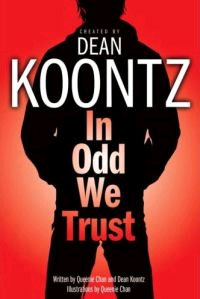 No, it doesn’t. I think a good writer is a good writer, and I don’t think the gender of the writer has any effect on the final work. Male and female writers may be interested in different things, or approach things from other angles, but a good story told well is exactly that, and all that’s left is accounting for differing tastes.
No, it doesn’t. I think a good writer is a good writer, and I don’t think the gender of the writer has any effect on the final work. Male and female writers may be interested in different things, or approach things from other angles, but a good story told well is exactly that, and all that’s left is accounting for differing tastes.
I think things are a little different for artists though. If you’re talking about artists who are paired up with writers, then it rests on the skill of the artist to tell the writer’s story effectively, and sometimes they don’t do that. However, that’s got nothing to do with gender though – it’s more to do with what genre that artist is used to working in. If an artist is flexible, they ought to know how to adapt themselves to different genres. If they don’t, and they believe that one-art-style-fits-all… then it can get a little awkward.
Q: And here’s the fun question. If you could book a trip on a time machine, where and when would you go, and why?
Ah, that’s a hard question. My answer can change each time someone asks me that question, depending on what I’m into at that particular point in time. Previously I said just after the meteor that destroyed the dinosaurs hit, so I can see the terrible global destruction that it must have caused (but I would probably die very quickly from it). But as of now, I may just take the easy route and travel to Ancient Egypt to watch them build the Pyramids and raise the Obelisk. I have a theory as to how they raised the Obelisk, and am wondering whether it checks out with history.
Catch up with Queenie on Facebook










